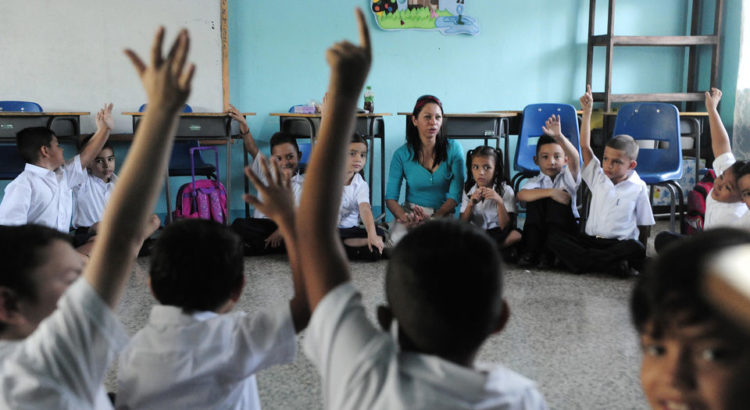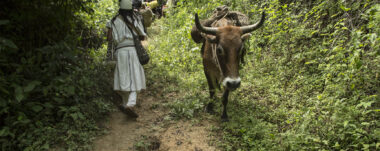Religious Education and Agnosticism in Costa Rica

Religious Education and Agnosticism in Costa Rica.
One of the particularities of Costa Rica is that Article 75 of the Costa Rican Constitution establishes Catholicism as the official religion of the country, making Costa Rica the only state in the Americas to have a state religion. The current debate on the subject and the move towards a fully secular state is in the public and political debate.
Article 75 of the Political Constitution establishes that “the Catholic, Apostolic, Roman religion is the religion of the State, which contributes to its maintenance”. This not only causes the entire Costa Rican population, regardless of their religion, to pay taxes to the Catholic Church, but also gives the Church a relevance in other political and educational matters.
Religion classes are part of the curriculum of the Costa Rican educational system, although it is an optional subject. More than 1,400 teachers teach in state schools and high schools this subject that was introduced more than 80 years ago by a negotiation between Calderón Guardia and the Catholic Church.
Religious Education in the Costa Rican Educational System
Religious education is mainly based on confessionalism, which means that the religion taught in schools is Catholic.
It was not until the 19th century that religious neutrality was introduced in public schools. Neutrality meant that students would be taught about different religions, but would not be required to practice any of them. This led to an increase in the number of Catholics, Protestants and Jews within the Costa Rican population because more people were exposed to these religions.
In the 20th century, there was an increase in interculturalism within Costa Rican society, as well as religious education.
Within the classroom, there are several models of religious education that often coexist in institutions. The first model is the “religion is a private matter” model, which prevailed during the nineteenth and early twentieth centuries, but has now been largely abandoned. The second model is the “religious instruction should be given at home” model, which is still used by many parents and teachers today. The third model is the “religious instruction should be given at school” model, which has been dominant since the 1940s.
Why Are Religion Classes Given?
The Catholic religion is the only religion taught in public schools and high schools. In Costa Rica, religion classes are mandatory for all students who practice the Catholic religion. But not all parents agree with this system and many of them choose to educate their children at home.
If the Costa Rican people are Christian, and their school laws are Christian, the religious education of children must be considered fundamental and in no way an accessory or secondary matter (Fernandez, 1887, p. 111).
However, there has been an increase in agnostic students who do not believe in any religion and therefore do not attend these classes. This has led Costa Rican legislators to vote on whether or not to completely eliminate religious education from public schools.
In fact, the trend in Latin America of being a confessional state and not expressing any official religion has left Costa Rica as the only country in the area with an official state religion.

Increase in Agnosticism in Costa Rica
Costa Rica has a long history of religious education in public institutions. The government’s decision to offer these courses as a mandatory course has been questioned by the population, with many claiming that it violates freedom of religion.
Inclusive education is a new trend in the country. It means that schools have to teach about different religions and beliefs, including atheism and agnosticism. Although, this is not the first time Costa Rica has seen an increase of agnostics. The country was one of the first to have this agnosticism boom in Europe and Latin America after World War II.
That is, Costa Rica is a predominantly Catholic country, but with the emergence of agnostic groups, religious education is changing. The country has seen a 20% increase in the number of people identifying as agnostic between 2006 and 2016. This change in religious education has led to an increase in secularism and more debates about what it means to be an atheist.
Although the Costa Rican education system is secular, it still has a lot of religious content. Although, the Catholic hierarchy has a significant weight in the decisions made by the Ministry of Education and also, until a few months ago, the Catholic hierarchy decided which people could teach religion, regardless of whether they had a university education or not.
In summary
- Article 75 of the Political Constitution establishes that “the Catholic, Apostolic and Roman religion is the religion of the State, which contributes to its maintenance”.
- It was not until the 19th century that religious neutrality was introduced in public schools.
- In Costa Rica, religion classes are mandatory for all Catholic students.
- The trend in Latin America of being a confessional state and not expressing any official religion has left Costa Rica as the only country in the area with an official state religion.
Author
Zelda Walters for Sensorial Sunsets
Bibliography
https://ddc.mep.go.cr/educacion-religiosa
https://repositorio.una.ac.cr/handle/11056/18845
Fernández, M. (1887). Memoria de la Secretaría de Instrucción Pública 1887. San José: Tipografía Nacional.
Navigate articles




